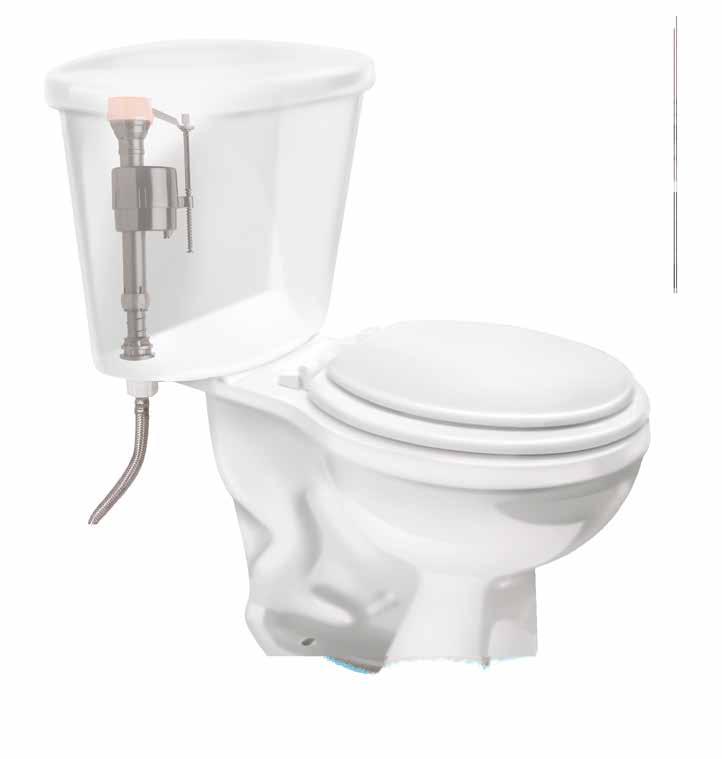
3 minute read
Electrical work
On the tools
ELECTRICAL WORK: HOW MUCH CAN YOU DO?
Armed with an Associated Tradesperson practising licence, plumbers and gasfitters are permitted to carry out certain electrical work. NZ Plumber looks at what electrical work is included and how to get ATP registered and licensed.
33 ELECTRICAL WORK 36 GREASE
MANAGEMENT 38 TECHNICAL THEME:
CENTRAL HEATING
INNOVATION 42 GASFITTER
UPDATES 44 PROJECT
SPOTLIGHT 48 PRODUCTS
Licensed plumbers and gasfitters who have Associated Tradesperson (ATP) registration from the Electrical Workers Registration Board (ERWB) are allowed to service* and maintain 250v electrical equipment relating to water heating, waste disposal units and water pressure devices.
The electrical work they are permitted to do is associated with their licence from the Plumbers, Gasfitters & Drainlayers Board. So, for example, a licensed gasfitter with ATP registration can carry out electrical work on gas water heaters—but a licensed plumber with ATP registration cannot.
See the panel on the right for a full guide to the limits of prescribed electrical work for plumbers, gasfitters and plumber/gasfitters.
“From my experience, there is some confusion among electricians about the fact that plumbers and gasfitters are permitted to do certain electrical work,” says Paul Manson, Senior Electrical Facilitator of Professional Programmes at Wintec in Hamilton, who offer ATP training.
“If you have ATP registration, I recommend you always carry your EWRB registration card with you, so you can show it to anyone who queries your competence to do the work.”
ATP registration process Certain criteria must be met for a registered plumber, gasfitter or plumber/gasfitter to get ATP registered: 1 Pass an EWRB approved Associated Tradesperson course and written exam that is relevant to your PGDB licence; 2 Pass an EWRB approved Associated Tradesperson practical assessment that is relevant to your PGDB licence; and 3 Complete approved safety training within the prescribed timeframe.
After successful completion of the theory and practical tests, you can apply to the EWRB for a practising licence.
Who offers ATP training? Wintec offers three options at its Hamilton campus: 5-day block course 5 Fridays full-day course 12-week night class (one night per week) Customised course at a business
Find out more at wintec.ac.nz/professional-programmes (see under Professional Programmes>Compliance & Refresher Courses)
Shift E-tec in Auckland offers: 3-day block course with a 6-week course preparation expectation Block courses are held around NZ during the year.
Find out more at etec.ac.nz/courses/etec-electrical for information and venues.
*What counts as servicing? For the purposes of the EWRB’s registration classes, ‘servicing’ means: • Any prescribed electrical work that involves the dismantling, repair, adjustment, reassembly and replacement of electrical fittings, other than the installation of permanently wired conductors, of works or electrical installations intended for the generation, conversion, transformation, conveyance, or control of electrical supplies.
Limits of work See below for a guide to the electrical work that plumbers and gasfitters can undertake with an Associated Tradesperson Licence.
Associated tradesperson (plumber) (a) The maintenance and replacement of fittings that have an electrical rating of not more than 250 volts and 16 amperes which are one of the following: (i) storage water heater elements; (ii) storage water heater thermostats. (b) The disconnection and connection of fittings from or to a power supply, other than by means of a plug or pin inserted into a socket, or an appliance coupler inserted into an appliance inlet; where those fittings have an electrical rating of not more than 250 volts and 16 amperes and are one of the following: (i) waste disposal units; (ii) electronic water control units; (iii) water pressure devices; (iv) storage water heaters. (c) The testing of work described in paragraphs (a) and (b) above. (d) The certification of work described in paragraphs (a) and (b) above. (e) The supervision of any work described in paragraphs (a) to (d) above.
Associated tradesperson (gasfitter) (f) The maintenance and replacement of fittings that have an electrical rating of not more than 250 volts and 16 amperes which form part of gas fired equipment. (g) The disconnection and connection of fittings from or to a power supply, other than by means of a plug or pin inserted into a socket, or an appliance coupler inserted into an appliance inlet; where those fittings have an electrical rating of not more than 250 volts and 16 amperes and form part of gas fired equipment. (h) The testing of work described in paragraphs (f) and (g) above. (i) The certification of work described in paragraphs (f) to (g) above. (j) The supervision of any work described in paragraphs (f) to (i) above.
Associated tradesperson (plumber/gasfitter) (a) All of the work described in paragraphs (a) to (j) above.

BRASS SHANK INLET VALVES PLASTIC SHANK INLET VALVES









